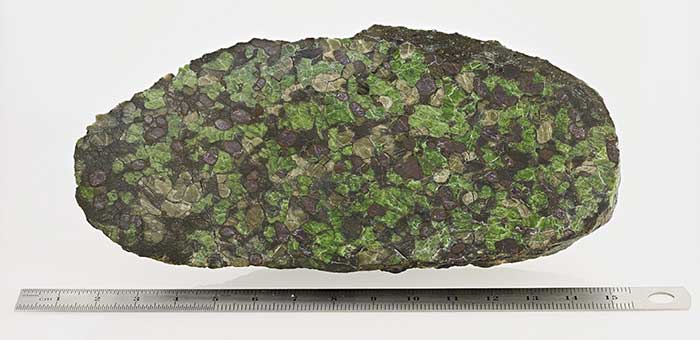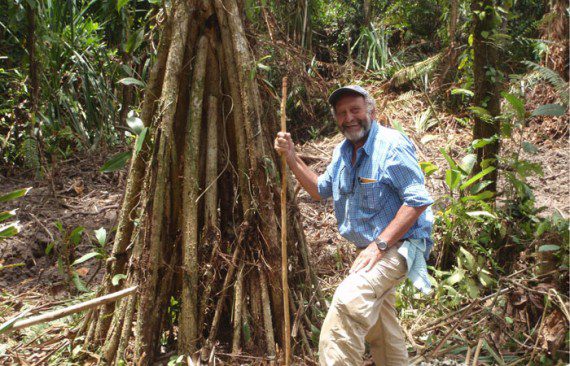
The Smithsonian Institution wanted Stephen Haggerty’s rock collection.
“Who in their right mind would say no?” was the FIU geologist’s response.
The 500 pound shipment just arrived in Washington, D.C. All told, many of Haggerty’s rocks fit neatly into 36 small plastic boxes nested in six large cardboard boxes and three plastic buckets. It cost $900 to ship to the world’s largest museum, research and education complex.
These aren’t just your garden variety rocks or moon rocks for that matter. Although Haggerty studied rocks brought back from NASA’s moon missions and named a mineral for the three Apollo 11 astronauts, NASA didn’t let him keep samples. One is already on display at the Smithsonian.
The rocks Haggerty shipped are a peek into Earth’s history – something that otherwise might not have been available to future geologists. Many rocks come from diamond mines all over Africa, ones that are either closed, are inaccessible to researchers, or that will be difficult to reach due to civil unrest.
“He’s super famous in the field for his work on mantle xenoliths – rocks that have rocketed from depths in the Earth greater than 200 miles to the surface,” said Elizabeth Cottrell, a research geologist and curator-in-charge of the national rock and ore collections at the National Museum of Natural History.
It’s not every day the Smithsonian makes that kind of call, Cottrell adds. The institution is interested in materials that have been heavily researched. In many cases, Haggerty’s research is the primary source of geological data in the locations where he has studied.
It is through these stones, Haggerty said, that people can better understand the planet through the rocks hundreds of miles below our feet. His kimberlites, for example, are among the deepest and oldest rocks ever uncovered. Many hail from the now shuttered Jagersfontein diamond mine in South Africa, where the Excelsior diamond – one of the largest in the world – was found.
Others hail from Sierra Leone and Liberia, where civil wars put on hold for a decade Haggerty’s opportunity to study kimberlite deposits there. It was worth the wait. Haggerty soon learned that the pamaya plant tended to grow over kimberlite pipes – elusive geological formations caused by violent eruptions that are the primary source of the world’s diamond production.

Sorting the rocks and shipping them to Washington, D.C. was a grueling effort. Haggerty wanted the Smithsonian to have the best samples. He was meticulous. He sorted stones seven hours a day, five days a week for five weeks. He scoured his collection for ilmenites, kimberlites, xenoliths and zircons – rocks and minerals that featured prominently in 57 published studies he also donated to the Smithsonian.
Smithsonian curators will begin cataloging Haggerty’s donation and preparing it for use by researchers. It’s possible that these rocks might one day make it to the floor of the National Museum of Natural History or join a traveling exhibit.
Haggerty’s packing days aren’t over yet. He’s sorting through another shipment that’s due to the Smithsonian in July.





